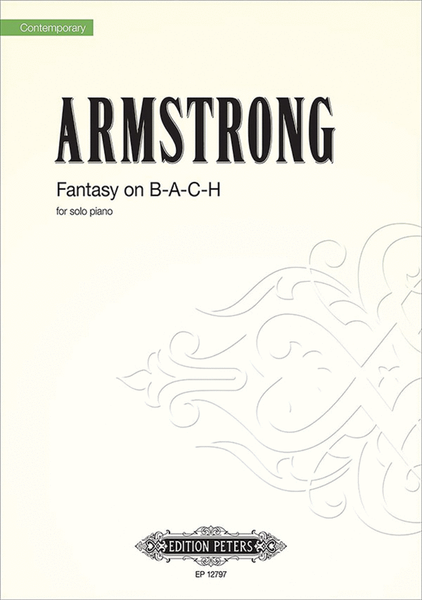Fantasy on B-A-C-H
for solo piano (2011)
Details
- Instruments
- Genres
- Publishers
- Formats
- Item Types
- Usages
Description
SKU: PE.EP12797
For solo piano (2011). Composed by Kit Armstrong. Piano (Solo). Edition Peters. Modern. Score. 32 pages. Edition Peters #98-EP12797. Published by Edition Peters (PE.EP12797).ISBN 9790014117313. 2011.
Commissioned by Sommerliche Musiktage Hitzacker
Premiered at Sommerliche Musiktage Hitzacker on 1 August 2011, by Kit Armstrong
"Many composers have used the B-A-C-H motif (B-flat A C B-natural), including Johann Sebastian Bach himself, most famously in his Art of Fugue. Robert Schumann wrote six fugues with different subjects, all created from this motif, in his Op. 60 (1845). Franz Liszt, in his Fantasy and Fugue on the Theme B-A-C-H, used it as a musical cell out of which the thematic tapestry and the melodic and harmonic language were generated. The motif was adapted naturally in dodecaphonic serialism; as a reordering of four adjacent pitches, whose inversion and retrograde coincide, it is an attractive part of a tone row. More recently, Arvo Part's use of the motif is noteworthy, such as in his Collage sur B-A-C-H for oboe, string orchestra and harpsichord and piano (1964) and his Concerto piccolo on B-A-C-H for trumpet, string orchestra, harpsichord and piano (1991).
I wanted not only to elaborate upon the name BACH, whose musical possibilities are undeniable, but also to pay homage to Johann Sebastian Bach, in an area where his work is now almost unknown in concert: chorale preludes and the so-called Partite diverse on chorale melodies, such as those on "Sei gegrusset, Jesu gutig" (BWV768). In such compositions, the chorale melody is presented in a sequence of little pieces, each of which resembles a chorale prelude on the same melody. One of the striking features of Bach's chorale preludes is the exceptional variety which they exhibit n in texture, in thematic treatment and significantly, in affect. They are indeed not purely abstract pieces which showcase the compositional possibilities allowed by the chorale melody, in a "dry" old-style imitative polyphony. (As a parallel, consider the canons of the Goldberg Variations, in which the writing is often more expressive at the expense of being contrapuntally smoother.) It is even the norm in Bach's polyphonic chorale settings for the most important role of the accompanying voices to be that of setting the mood, by suggesting feelings or images contained in the text of the chorale. One could call this "impressionism".
The approach that I have taken in this composition is thus: to build a theme using the motif B-A-C-H, treat it as a fixed "chorale" melody, and then write a sequence of self-contained "preludes" on this melody using methods reminiscent of, or in some cases extensions of techniques that Bach employed." (Kit Armstrong)
This product is Printed on Demand and may take several weeks to fulfill. Please order from your favorite retailer.

 Share
Share